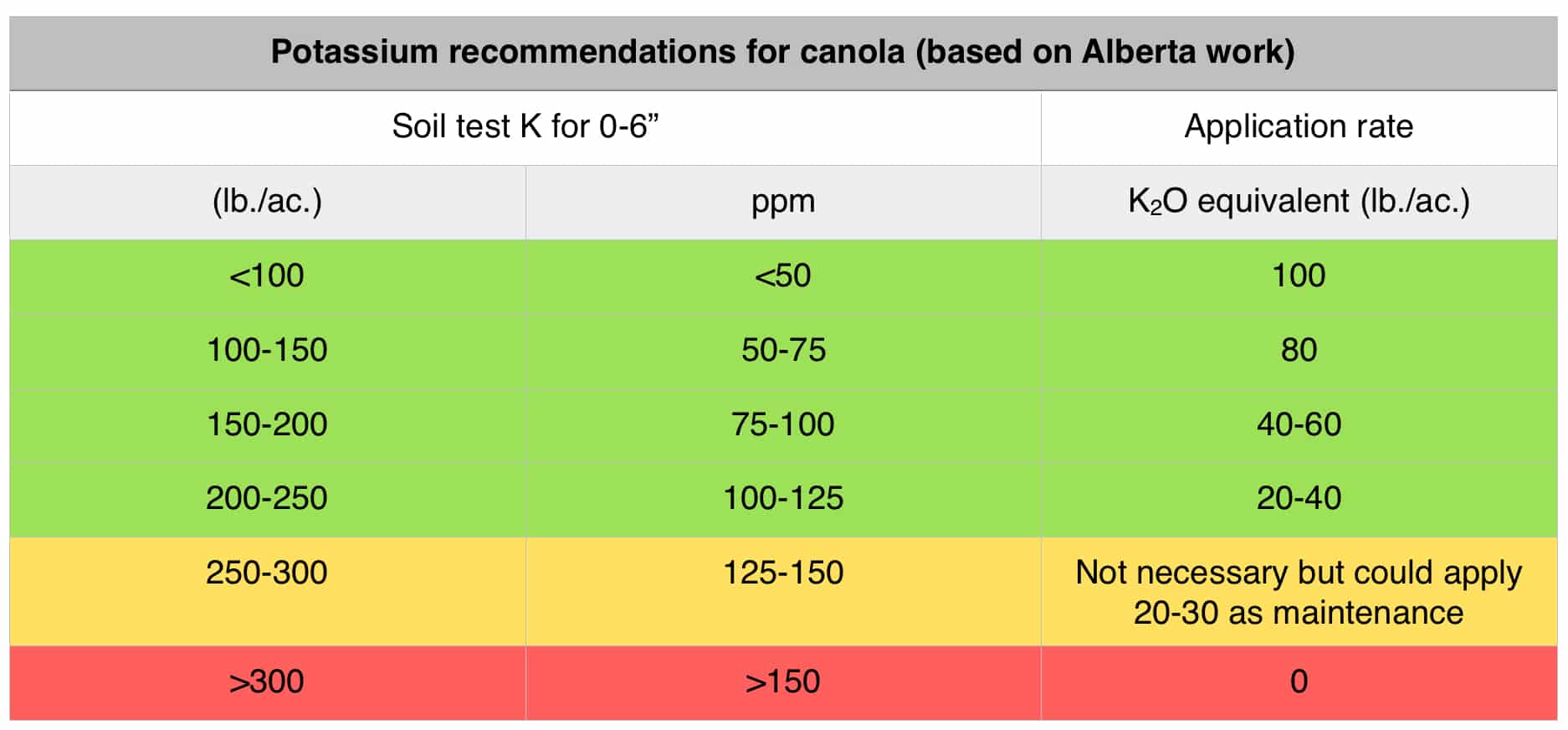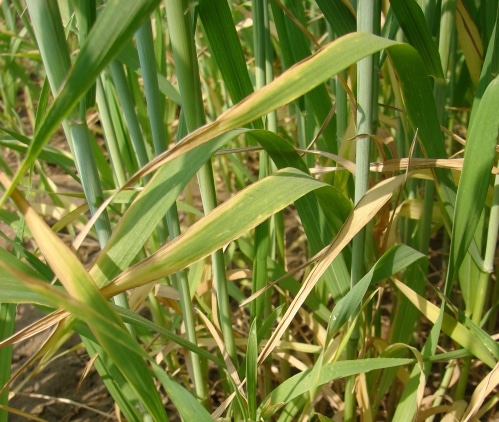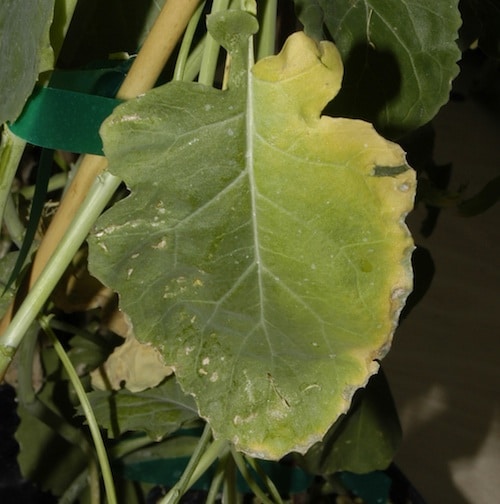Canola plants need 2.1-2.5 pounds of potassium* for every bushel of seed yield produced, but remove just 20-25% of that with the harvested seed. Most potassium (K) taken up is returned to the soil in the crop residue and quickly becomes available for subsequent crops.
Prairie soils also continuously add to plant-available soil K reserves through breakdown and release of K from soil clay minerals.
Only 1-2% of soil K is plant available, with a very large pool locked within in clay particles that continually break down with weathering to release K in plant available form. For that reason, soils with moderate to higher levels of clay are usually not K deficient.
Sandier soils with low clay levels are more likely to be at or near deficiency levels. Soils that are intensively cropped are more likely to need K fertilizer. Crops with a high K requirement include as potatoes, alfalfa or silage crops. Alberta soil fertility expert Ross McKenzie estimates that about 20 to 25% of Prairie soils are K deficient, and overall soil K levels are in a slow decline.
1. Soil tests
If levels are less than 250 lb./ac. (125 ppm), K fertilizer is recommended for wheat and canola.
2. Rates

3. Product
Potassium chloride (potash) is the most common fertilizer, abbreviated as KCl or 0-0-60.
4. Placement
KCl has a high salt index and therefore should not be placed in the seed row. K is not mobile in soil and therefore should be side banded near the seed.
5. Deficiency symptoms
Cereals are more likely to show symptoms when soil levels drop below 300 lb./ac. Symptoms may not be obvious in canola until soil reserves drop below 150 lb./ac.
Wheat with a potassium deficiency will have chlorosis on older plant parts, and leaves may eventually become streaked with yellow.

Canola with potassium deficiencies may have:
—A yellowish brown “scorched” look at leaf margins edges.
—Potassium is mobile, so plants will move the nutrient from bottom leaves to top leaves, so bottom leaves will yellow off first.
—Uneven pod maturity.

Read the Canola Encyclopedia for more on potassium management.
*Source. In fertilizers, potassium is reported as potassium oxide (K2O) equivalent, which is 80% actual K.

